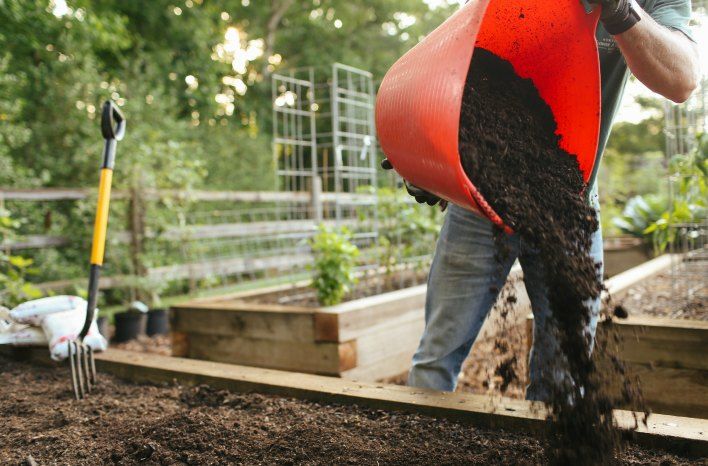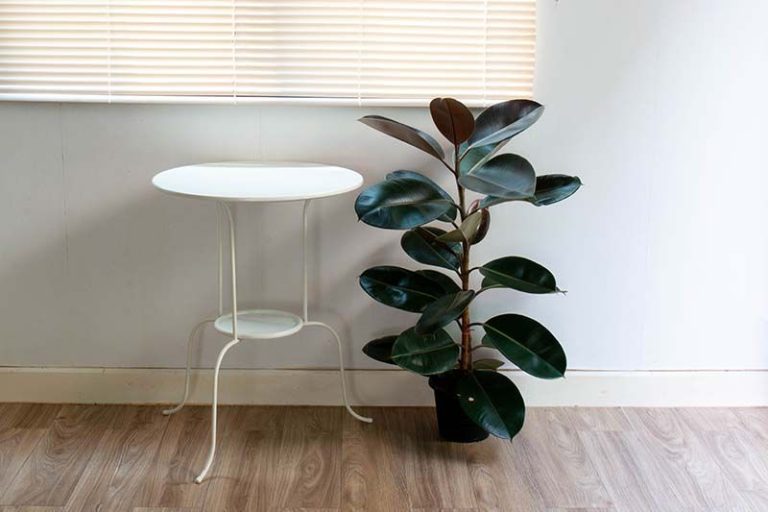Ultimate Guide To Growing And Caring For Indoor Herbs
Growing herbs indoors is a great way to have fresh herbs on hand year-round. It allows you to add flavor to your cooking with homegrown herbs even when it’s cold outside. Some of the most popular herbs to grow indoors include basil, parsley, thyme, oregano, sage, rosemary, chives, and cilantro.
There are many benefits to growing herbs indoors. You can save money by not having to buy herb plants or cut herbs from the grocery store. It also allows you to control the growing environment and avoid pesticide use since you’ll be growing organically indoors. Additionally, it’s fun and rewarding to watch your herb plants grow over time and be able to harvest them for your recipes.
Indoor herb gardening has become increasingly popular in recent years. According to Statista, an estimated 24.2 million U.S. households participated in indoor herb gardening in 2020, up from 18 million in 2010. With the right growing conditions, many culinary herbs can thrive indoors and provide a convenient source of fresh flavor all year long.
Choosing the Right Herbs
When choosing herbs to grow indoors, it’s important to select varieties that thrive in indoor growing conditions. Some herbs that grow exceptionally well indoors include:
- Basil
- Chives
- Mint
- Oregano
- Parsley
- Rosemary
- Thyme
Herbs that originate from tropical or subtropical regions, like basil, are great choices for indoor growing. Herbs that naturally prefer dry conditions, like oregano and thyme, also adapt well to indoor environments. Consider the light, soil, temperature, and humidity needs of the herbs when choosing which to grow indoors. Most indoor herbs thrive best in bright, indirect light and require well-draining potting soil. Daytime temperatures between 65-75°F and 45-55% humidity are ideal for most indoor herbs 1.
Getting the Right Planters
One of the most important things to consider when growing herbs indoors is choosing the right planters. The pot size, depth, drainage, and whether it’s self-watering or standard are all key factors.
Pots between 4-10 inches wide and deep are ideal for most indoor herbs. This gives their roots enough room to grow without the pot becoming too large and cumbersome. Drainage is also critical – all pots should have holes in the bottom to allow excess water to escape. Plastic, ceramic, or self-watering pots work well. Avoid non-porous materials like glass or metal that could lead to overwatering.
Self-watering pots are convenient options that regulate moisture through a water reservoir in the base of the pot. This provides a constant, even water supply to plant roots. Standard pots require more attentive watering and checking soil moisture. Both can work for indoor herbs.
When selecting planters, be sure to consider the size of the herbs at maturity. Larger planters will be needed for basil, mint or oregano. Small thyme or chives can thrive in smaller pots. Getting the right sized planter with proper drainage is key for healthy indoor herbs.
https://www.seriouseats.com/best-indoor-herb-gardens-7563224
Soil and Fertilizer Needs
When growing herbs indoors, it’s important to choose a potting mix specifically formulated for indoor container gardening. Avoid using garden soil or compost as these can contain potential pathogens that can harm your indoor herbs. A quality potting mix for indoor herbs will provide good drainage and air flow for healthy root growth.
Most experts recommend using a commercial potting mix that contains a combination of peat moss or coconut coir along with vermiculite or perlite for drainage. Some popular options include Miracle-Gro Indoor Potting Mix which is specially blended for growing indoor edibles like herbs.
While herbs don’t require much fertilizer, you can add a diluted liquid fertilizer every 2-3 weeks during the growing season for an extra boost. Use an organic fertilizer made specifically for edibles or a balanced all-purpose water soluble fertilizer. Follow package directions carefully and don’t over-fertilize as this can damage sensitive herb roots.
Sunlight and Lighting Requirements
Most herbs need at least 6 hours of direct sunlight per day to thrive. South-facing windows are ideal for getting enough sunlight indoors. Herbs placed in south-facing windows will soak up the most sunlight throughout the day as the sun travels across the southern part of the sky.
If you don’t have a south-facing window, you can use grow lights to supplement natural sunlight. LED grow lights designed for indoor plants are an affordable and energy-efficient option. Place the grow light 6-12 inches above the herbs and set a timer for at least 14-16 hours per day. Refer to manufacturer instructions for specific distances and durations for the grow light model you choose. Some good options are full spectrum LED grow light panels or LED grow light bulbs in adjustable fixtures [1].

Even if you have a sunny window, using grow lights to provide supplemental lighting ensures the herbs get enough light. During short winter days or overcast periods, combining natural light and grow lights will support vigorous growth.
Watering and Humidity
Proper watering is essential for healthy herb growth. How often you need to water will depend on factors like the type of herb, pot size, temperature, and humidity levels.
Most indoor herbs need to be watered about once or twice per week. Let the soil dry out between waterings. Herbs like mint and oregano are drought tolerant and prefer drier soil, while basil and parsley like more consistent moisture. Frequent, light watering can lead to shallow roots and encourage fungus or rot.
Signs your herbs need water include drooping leaves, soil pulling away from the edges of the pot, and soil that feels dry when you stick your finger in the top few inches. Overwatered herbs may turn yellow, wilt, drop leaves or develop root rot. Allow excess moisture to drain out of potted herbs.
While herbs don’t require high humidity, maintaining moderate humidity around 40-50% can help prevent excess drying. Use a humidifier nearby or place pots on a pebble tray with water.
For more details, refer to “A Guide to Watering Herbs—Best Practices for a Healthy Herb Garden” (https://swanhose.com/blogs/watering-herbs/a-guide-to-watering-herbs-best-practices-for-a-healthy-herb-garden).
Caring for Seedlings
Caring for herb seedlings properly is crucial to getting them off to a healthy start. Young seedlings need a little extra attention before they’re ready for life as established indoor herbs.
Most herbs take 4-6 weeks to grow from seeds to transplant size. Once the seedlings have developed their first true leaves, it’s time to start the hardening off process. This gradually gets the seedlings used to the drier air and fluctuating temperatures they’ll experience when transplanted. Start by placing the seedlings in a partially shaded outdoor location for a few hours a day, bringing them back indoors at night. Slowly increase their time outside over 1-2 weeks.
Next comes acclimating the herbs to their new indoor environment. Place the transplants in a sunny indoor location near the spot they’ll be permanently homed. Let them adjust for 3-5 days before transplanting into their final containers. Take care not to overwater during this adjustment period. The key is helping seedlings transition gradually to prevent shock.
Ongoing Herb Care
Properly caring for herbs after they’ve been established is crucial for their health and productivity. Here are some tips for ongoing herb care:
Pruning and harvesting: To keep herb plants compact and productive, prune them regularly by pinching or snipping off stem tips. Harvest leaves as needed once plants are mature, being careful not to remove more than 1/3 of the plant at once. Frequent harvesting encourages bushier growth.1
Troubleshooting issues: Check plants regularly for signs of problems like wilting, yellowing leaves, drooping, or stunted growth. This may indicate issues like improper watering, pests, diseases, or insufficient sunlight. Address any problems promptly by adjusting care accordingly.
Fertilizing schedule: Apply a balanced liquid fertilizer every 2-4 weeks during the growing season according to label directions. Reduce fertilizer frequency in winter. Excess fertilizer can harm plants. Before fertilizing, check soil moisture and only fertilize plants whose soil is slightly dry.
Pest and Disease Control
Growing herbs indoors comes with the risk of pests and diseases. Being vigilant and taking preventative measures can help keep your herbs healthy.
Some common indoor herb pests include aphids, whiteflies, mealybugs, and spider mites. These pests feed on the herbs, damaging leaves and stunting growth. To prevent pests, isolate new plants and inspect them thoroughly before introducing them. Check plants regularly for signs of pests like webbing, honeydew, or speckled leaves.
Diseases like powdery mildew, botrytis, root rot, and leaf spot can also affect indoor herbs. Avoid overwatering, allow for air circulation, and provide proper sunlight to prevent diseases. Remove affected leaves immediately and treat with neem oil or insecticidal soap.
If pests or diseases occur, organic pest solutions include neem oil, insecticidal soap, horticultural oil, or a strong spray of water. Apply pest treatments every 5-7 days until the infestation clears. Proper identification and quick action are key to saving infected plants.
Choosing Where to Grow Herbs
When growing herbs indoors, you have a few options for where to locate your herb garden. Many people choose to grow herbs in pots that can be moved around as needed. This allows flexibility in placement and makes it easy to bring them outside during warm weather. Herb pots can be grouped together on a sunny windowsill, kitchen counter, or other location in the home. Just be sure the area gets at least 6 hours of sunlight per day.
For a permanent indoor herb garden, consider creating built-in planter boxes or converting an unused space into a mini greenhouse. Get creative with cupboards, bookshelves, windowsills, and other nooks. An old cabinet or dresser with the center removed makes a great planted display. Or install shelving with grow lights to have an indoor herb wall. Position your permanent garden in a spot that receives ample natural light and ventilation if possible (source).
When deciding where to locate your indoor herb garden, consider airflow, temperature fluctuations, humidity, and your own usage patterns. Avoid areas that get too hot, cold, or damp. Placement in the kitchen is ideal for frequent harvesting while growing herbs in a living room provides decorative greenery.





